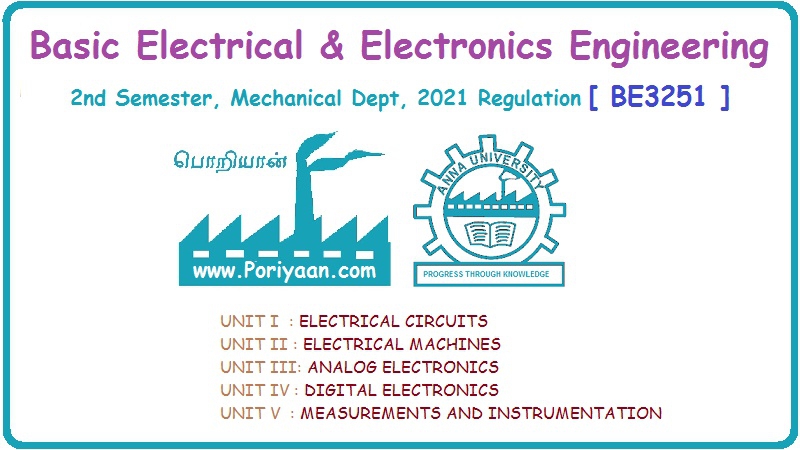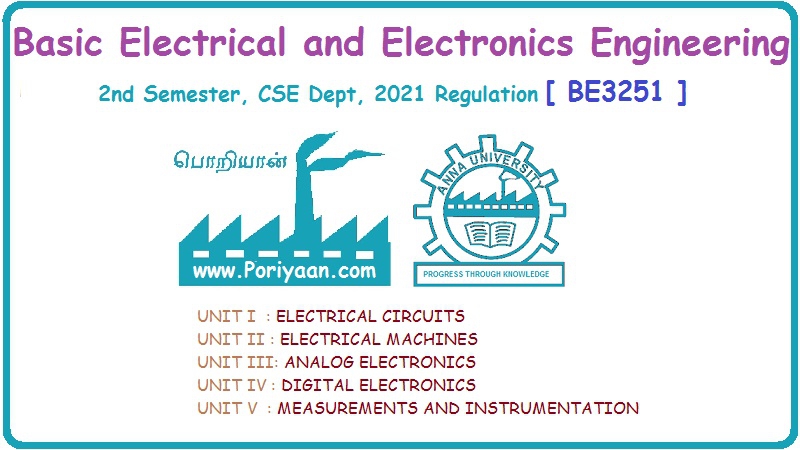Basic Electrical and Electronics Engineering: Unit II: Electrical Machines
Principle of Operation for DC motor
The basic principle is whenever a current carrying conductor is placed in a magnetic field the conductor experiences a force whose direction is given by fleming's left-hand rule.
PRINCIPLE
OF OPERATION
The
basic principle is whenever a current carrying conductor is placed in a
magnetic field the conductor experiences a force whose direction is given by
fleming's left-hand rule.
If
a current carrying conductors is placed between two magnetic poles as shown in
fig 3.23, both the fields will be distorted flux (less flux)
From
the fig 3.23 above the conductor the field is weakened and below the conductor
the field is strengthened. Therefore the conductor move upwards. The force
exerted upwards depends upon the intensity of the main field flux and the
magnitude of the current.
The
direction of the current through the conductor is reversed as shown in fig
3.24. Here, below the conductor field is less weakened and above the conductor
the field is strengthened. Then the conductor tends to move downwards.
The
magnitude of the force experienced by the conductor is
F
= BI Ɩ
Where
B
- magnetic field density in wb/m2
I
- current in ampere
Ɩ
- length of the conductor in meters
The
direction of motion is given by fleming's left hand rule, which states that, if
the left thumb, force finger and middle finger of the left hand are three
mutually perpendicular directions and if the fore finger indicates the
direction of the field, and the middle finger indicates the direction of
current, then the thumb points the direct of motion of the conductor.
In a dc motor, a strong electromagnetic field
and a large no of conductors housed in an armature and carrying current, make
the armature rotate.
Basic Electrical and Electronics Engineering: Unit II: Electrical Machines : Tag: : - Principle of Operation for DC motor
Related Topics
Related Subjects
Basic Electrical and Electronics Engineering
BE3251 2nd semester Mechanical Dept | 2021 Regulation | 2nd Semester Mechanical Dept 2021 Regulation
Basic Electrical and Electronics Engineering
BE3251 2nd Semester CSE Dept 2021 | Regulation | 2nd Semester CSE Dept 2021 Regulation

